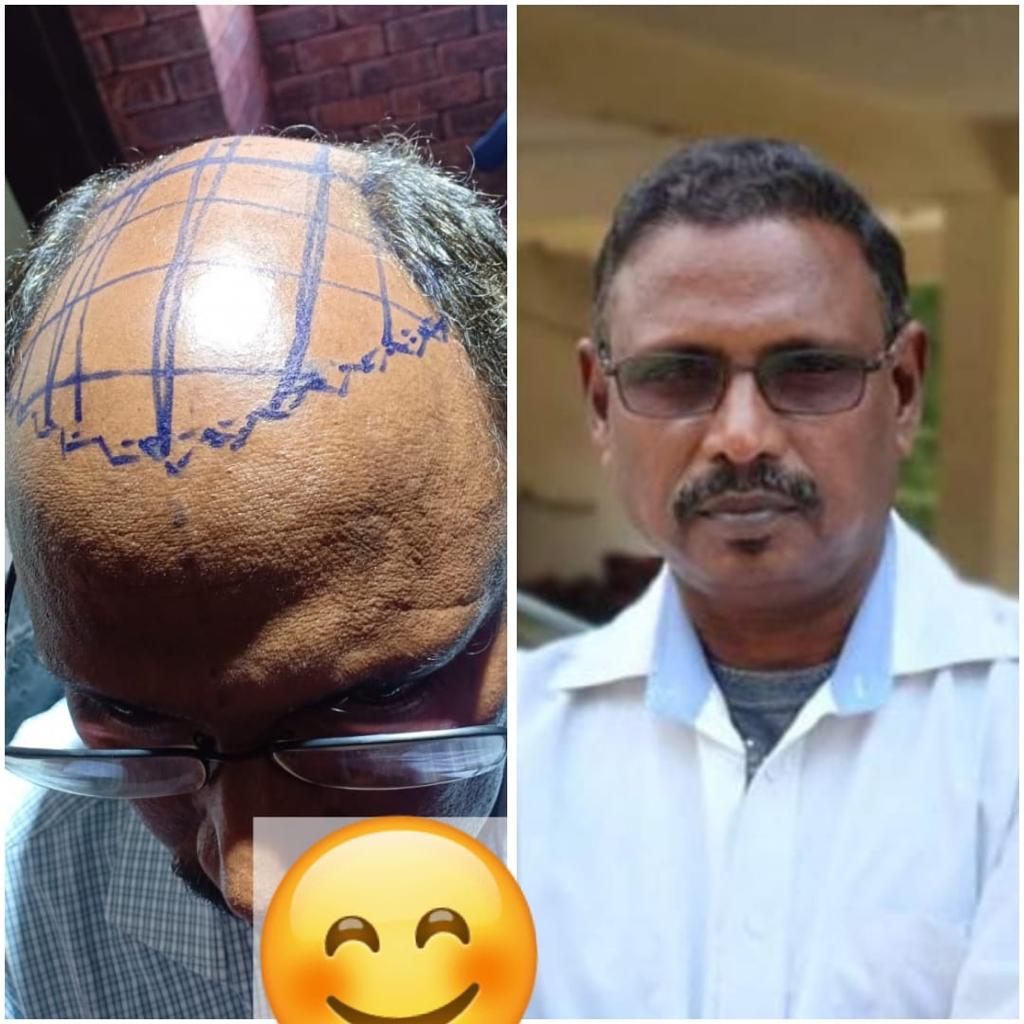FUE Hair Transplant in Islamabad
Hair transplant is a surgical procedure designed to address hair loss or baldness by transplanting hair follicles from one part of the body (usually the back or sides of the scalp) to the bald or thinning areas.
This procedure is commonly used to restore hair in areas affected by androgenetic alopecia (genetic hair loss), injury, or other causes of hair loss. There are two primary methods of hair transplantation: Follicular Unit Transplantation (FUT) and Follicular Unit Extraction (FUE).
Before the procedure, individuals typically have a consultation with a qualified hair transplant surgeon. During this consultation, the surgeon assesses the extent of hair loss, discusses the patient’s goals, and determines the most suitable approach for transplantation.
Preoperative Assessment
The surgeon evaluates the quality and quantity of the donor hair (hair to be transplanted) and discusses realistic expectations with the patient.
Medical history, including information about any previous hair loss treatments, medications, or underlying health conditions, is reviewed.
Follicular Unit Transplantation (FUT):
Overview:
FUT is often referred to as the “strip method” because it involves removing a strip of skin with hair follicles from the donor area, which is typically the back or sides of the scalp.
This strip is then carefully dissected into individual follicular units, each containing one to four hairs.
The dissected follicular units are subsequently transplanted into the recipient area, addressing areas of baldness or thinning.

Pros
- High Graft Yield: FUT allows for the extraction of a larger number of grafts in a single session compared to FUE.
- Shorter Surgery Time: The procedure may be completed more quickly than FUE for a similar number of grafts.
Cons:
- Linear Scar: The main drawback of FUT is the presence of a linear scar at the donor site. The scar is typically long but can be concealed by surrounding hair.
- Longer Healing Time: The donor area may require more time to heal compared to FUE.

Follicular Unit Extraction (FUE):
Overview:
FUE involves the extraction of individual follicular units directly from the donor area, usually using a small, circular punch tool.
The extraction leaves small, dot-like scars at the donor site that are less noticeable than the linear scar from FUT.
The harvested follicular units are then transplanted into the recipient area, similar to FUT.
Pros:
No Linear Scar: FUE is known for not leaving a linear scar, making it a preferred choice for those who prefer short haircuts or who want to keep their hair relatively short.
Less Invasive: FUE is considered a less invasive procedure, and the healing time at the donor site is typically faster compared to FUT.
Versatility: FUE allows for flexibility in choosing donor areas, including areas outside the traditional donor zone.
Cons:
- Lower Graft Yield per Session: FUE may yield fewer grafts per session compared to FUT, making it potentially less suitable for extensive hair loss cases.
- Longer Procedure Time: The FUE procedure may take longer, especially for a large number of grafts.
- Suitability:
- FUE is often chosen by individuals who prefer to avoid a visible linear scar or have a preference for short hairstyles. It may be suitable for those with mild to moderate hair loss.
Ultimately, the choice between FUT and FUE depends on individual preferences, the extent of hair loss, and the goals of the patient. Consulting with a qualified and experienced hair transplant surgeon is crucial to determine the most suitable method based on the individual’s specific case and desired outcomes.
Anesthesia
Local anesthesia is administered to both the donor and recipient areas to ensure the patient’s comfort during the procedure.
Donor Hair Extraction
For FUT, a strip of skin containing hair follicles is surgically removed, and the wound is closed with stitches.
For FUE, individual follicular units are extracted one by one using a micro-punch tool.
Follicle Preparation
The extracted follicular units are carefully dissected and prepared for transplantation. Each unit typically contains one to four hairs.
Recipient Site Preparation
Tiny incisions are made in the recipient area where the hair will be transplanted. The angle, density, and arrangement of the incisions are crucial for achieving a natural-looking result.
Hair Transplantation
The prepared follicular units are meticulously placed into the recipient incisions. The surgeon considers the natural direction and angle of hair growth to ensure a seamless integration with existing hair.
Postoperative Care
Patients are provided with postoperative instructions, including information on caring for the transplanted area and any necessary medications.
Swelling, redness, and scabbing are common in the days following the procedure but typically subside within a week or two.
Recovery and Results
The transplanted hair initially sheds within a few weeks, but new hair growth typically begins within a few months.
Full results may take several months to a year to become apparent as the transplanted hair grows and matures.
Consultation with a Professional
Hair transplant surgery is generally considered safe and effective, providing a long-term solution to hair loss. However, it’s essential for individuals considering a hair transplant to have realistic expectations, understand the potential risks and benefits, and choose a qualified and experienced surgeon for the procedure.
If you’re interested in scheduling a consultation, we encourage you to reach out by sending a message through the contact details provided via WhatsApp or by giving us a call. We’re here to assist you in setting up an appointment, answering any questions you may have, and ensuring a smooth and convenient booking process. Your well-being and satisfaction are our top priorities, and we look forward to assisting you every step of the way.


